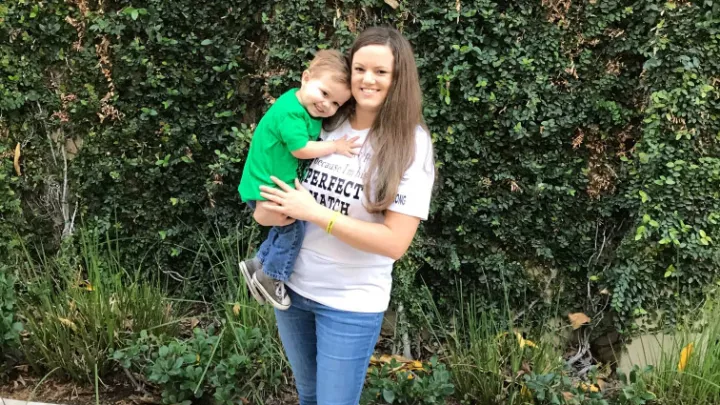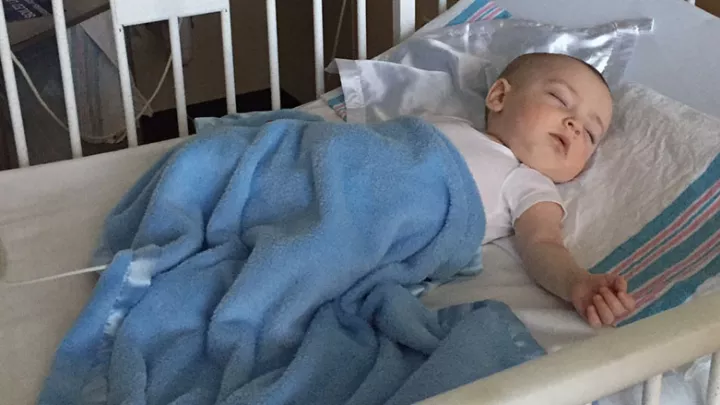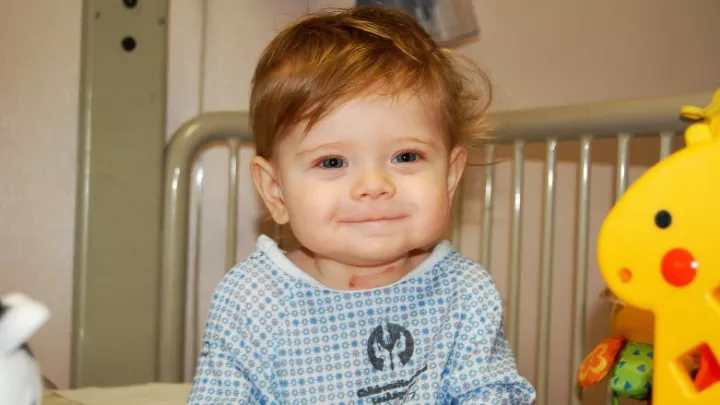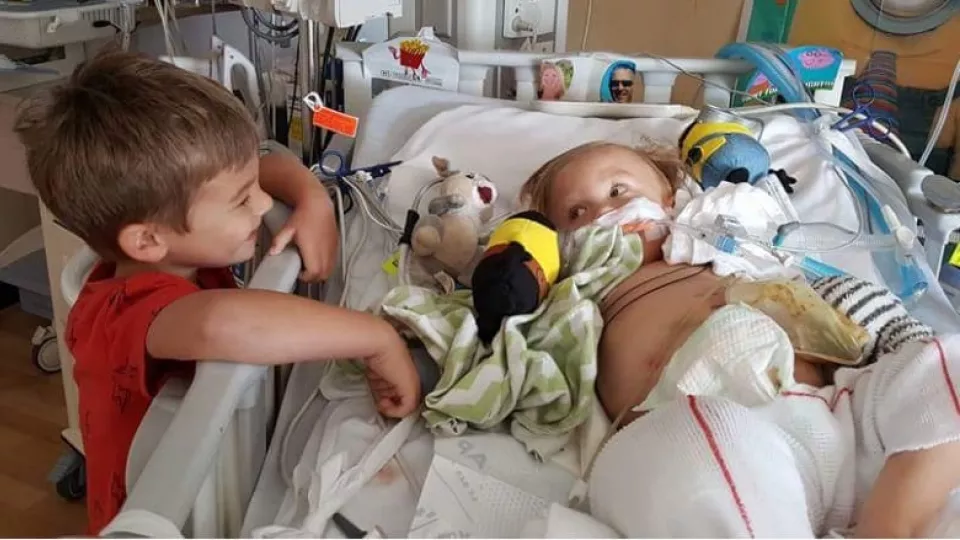
Have Big-Brother Hero Cape, Will Travel
“You’re doing a good job, buddy.”
Those are the loving words 5-year-old Carter Holt whispers to his little brother, Forrest, whenever he leaves his bedside.
For the last three years, Carter has been in and out of the hospital. Not because he needs medical care, but because he enjoys spending time with Forrest, the one whose life depends on it.
“Carter and Forrest have the most amazing bond,” says Tonia Reynolds, the boys’ mother. “Carter always knows how to make Forrest smile and Forrest knows his big brother will always be by his side.”
Those words of encouragement and unconditional love demonstrate the undeniable bond that have helped Forrest and his parents get through a difficult time.
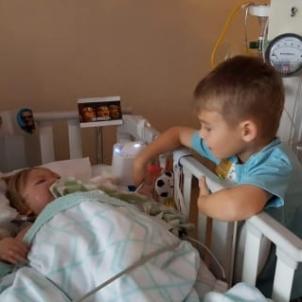
Forrest was born seven weeks premature in Germany, where his father, Tim, was stationed with the United States Army. He was diagnosed with end-stage renal disease—meaning he has no function in either of his kidneys. He also has a vascular malformation in his right leg, causing it to look much larger and wider than his left. But it’s more than just appearances. His veins, which should be the size of juice box straws, are actually the size of a roll of dimes.
Forrest’s blood will often get caught in these enlarged veins, thinning the blood and lowering hemoglobin, platelets and clotting factors. All of these symptoms made it difficult to address Forrest’s mass, as he could potentially bleed out within minutes.
He spent the first four months of his life in three different German hospitals, unstable and unsure of the future.
“Forrest almost died five times in the first five months of life,” says Tonia. “He coded three times by the time he was 5 weeks old, almost bled to death at 4½ months old, and at 5 months he coded again as his kidneys were failing.”
In order to receive adequate care, Tonia, 4-month-old Forrest and 2-year-old Carter were medevacked by a large military transport aircraft with wounded soldiers back to the U.S. But shortly after returning, Forrest had a bleeding incident and was rushed to a children’s hospital in the District of Columbia, where they would spend the next seven months. During this time, Forrest underwent 19 rounds of sclerotherapy, where solution is injected into the enlarged veins to reduce their size, in hopes of eventually removing them.
With no home and living out of a suitcase, Tonia desperately wanted to move closer to her family in Santa Barbara. Once Tim was out of the Army, the family moved out west and Children’s Hospital Los Angeles was the best place to continue Forrest’s care as there is no other multidisciplinary vascular anomalies team in the western U.S. like the one here.
‘Watch my baby’
“When we first met Forrest, we were familiar with his condition and understood the severity of his case,” says Dean Anselmo, MD, pediatric surgeon in the Vascular Anomalies Center at CHLA. “It took the team five to six months to plan out how we were going to tackle Forrest’s condition, because we wanted to get this right.”
The plan was confirmed, the surgery was set and all teams were determined. But after everything Forrest had been through, Tonia was worried.
“Prior to Forrest’s surgery, he had spent almost half of his life in the hospital,” says Tonia. “So, I wanted to make sure he got to do things that most kids his age usually would have already done. I wanted to make sure we had those memories … just in case.”
The family went to the aquarium, the Natural History Museum, to a Dodgers game; they took a bus ride to Stearns Warf in Santa Barbara so he could indulge in his favorite food (French fries), had a sunset beach walk and rode tugboats. You name it and they tried to do it. One of those activities included celebrating Carter’s fifth birthday. Unfortunately, two days before the party, Forrest was struck with a staph infection and was immediately transported to CHLA. Carter wasn’t able to have his birthday party.
“At times, Carter is kind of put on the side while we deal with Forrest’s conditions, but he doesn’t see it as rejection and understands,” says Tonia. “That’s when he puts on his big-brother hero cape and helps out.”
Carter is a courageous big brother—after all, courage runs in the family—who never stops thinking and talking about Forrest, and understands that his brother needs to stay in the hospital. But he always makes sure that someone is keeping an eye on Forrest—letting the nurses know to watch “his baby.”
‘Come home’
More than just the nurses have been watching over Forrest. He’s currently seen by nine areas at CHLA: Nephrology, Hematology, Complex Care, Surgery, the Vascular Anomalies Center, Palliative Care, Psychiatry, Infectious Diseases and Rehabilitation. He is also waiting to be placed on a transplant list for a new kidney.
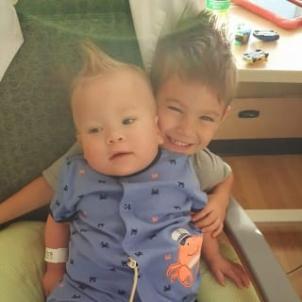
On the day of his surgery, the whole team came together to get Forrest through it. In order to control his bleeding, the Vascular Anomalies team temporarily stopped the blood flow to the lower half of his body. They then went in and removed 85 percent of his malformation.
“He was on the operating table for nearly 10 hours, but his amazing VAC team, OR team and Anesthesia team did it,” says Tonia.
However, over the next seven days, Forrest began bleeding to death … again. After much research, discussion and planning, Forrest was scheduled for an abdominoperineal resection 20 days after his first surgery. He would spend 13 hours in the operating room as the VAC team removed his anus, colon and rectum—the areas that were affected by the malformation—and his blood would be replaced 15 times.
“His team never gave up,” says Tonia.
Throughout all this, there has been one thing Carter has wanted for his brother: to come home.
Anselmo says the risk of Forrest’s bleeding episodes are significantly reduced and he is doing well. Forrest is back home with his family, and has learned how to pull himself up and walk. However, he will still need an additional surgery to freeze the malformation, and will eventually need a kidney transplant as well. But, like always, Carter will be by his side to get him through it all.
How you can help
Donate today to give hope to a child just like Forrest. Visit CHLA.org/Donate.
